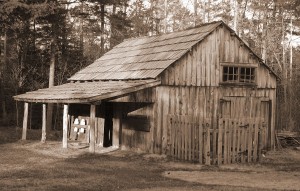Home Buyers-
With the housing industry still shaken and weak from the sub-prime mortgage collapse of 2008, it’s no surprise that buyers are erring on the side of caution. A young family that might have purchased a home in 2005 may now choose to rent, and home-ownership rates have fallen over three percent in just a few years’ time. That number is likely to continue to drop, which makes understanding the people who are still buying more important than ever before. There are different economic trends emerging across the nation, particularly when differentiated by age and economic class. Whether they’re young adults, middle-aged or elderly, Americans are looking at owning a home in a whole new way. It’s only by capitalizing on this that lenders and sellers can hope to return to profitability.
 First-Time Home Buyers
First-Time Home Buyers
Individuals and families buying their first home make up about 43 percent of all Real Estate transactions in the United States. They are, however, remaining cautious. The typical first-time home buyer is in his or her early thirties, and buys a house that is well within budgetary reason. With foreclosure on the tip of everyone’s tongue and an unreliable job market offering no guarantees, the next generation of property owners aren’t going to take risks with their financial future. They gravitate toward small homes in the city, which reduce commuting, heating and renovation costs. Their average buying price is $150,000 to manage debt and keep mortgage payments low.
Established Families
The families that survived the downturn are often still struggling to make ends meet, but as the economy slowly begins to turn around outlooks are improving. Double-income families have been sitting tight and riding out the bad market for years now, and they’re ready to move up. Middle class individuals looking for their second or third home are paying an average of $230,000. They still prefer the cities, but are more likely to seek the relaxing countryside or suburbs for the sake of their children. They typically have more money to put down, and opt for shorter loans that are still within their range of comfort. The people of this age bracket have probably seen friends and family go into foreclosure, or even experienced it themselves, and tend to stick to safe choices.
Senior Citizens
The poor economy has hurt senior citizens as well, and some are abandoning their homes to live with family or in assisted-living communities. Elderly individuals are, however, still a mainstay of the housing industry, as over 80 percent of them own their own homes rather than rent. Fresh retirees often use their new freedom to move to the location they’ve always dreamed of, which may or may not have been financially feasible while working. Others remain in the family home where they raised their children. Rather than consign themselves to a nursing home, in-house care is becoming a popular way for seniors to receive the attention they need while retaining their freedoms. As pensions and social security fail to keep up with inflation, this aging demographic may be forced to downsize, but for now senior housing remains relatively stable.
Despite the lingering fear within the housing market, owning a home remains an integral part of the American dream. By working with buyers to find a fair solution for all, banks and sellers can once again rekindle the enthusiasm that led to the dramatic spike in home ownership since the days of World War II. The market will eventually recover, but how long it takes depends as much on consumer perception as on obscure financial numbers.
See Also:
